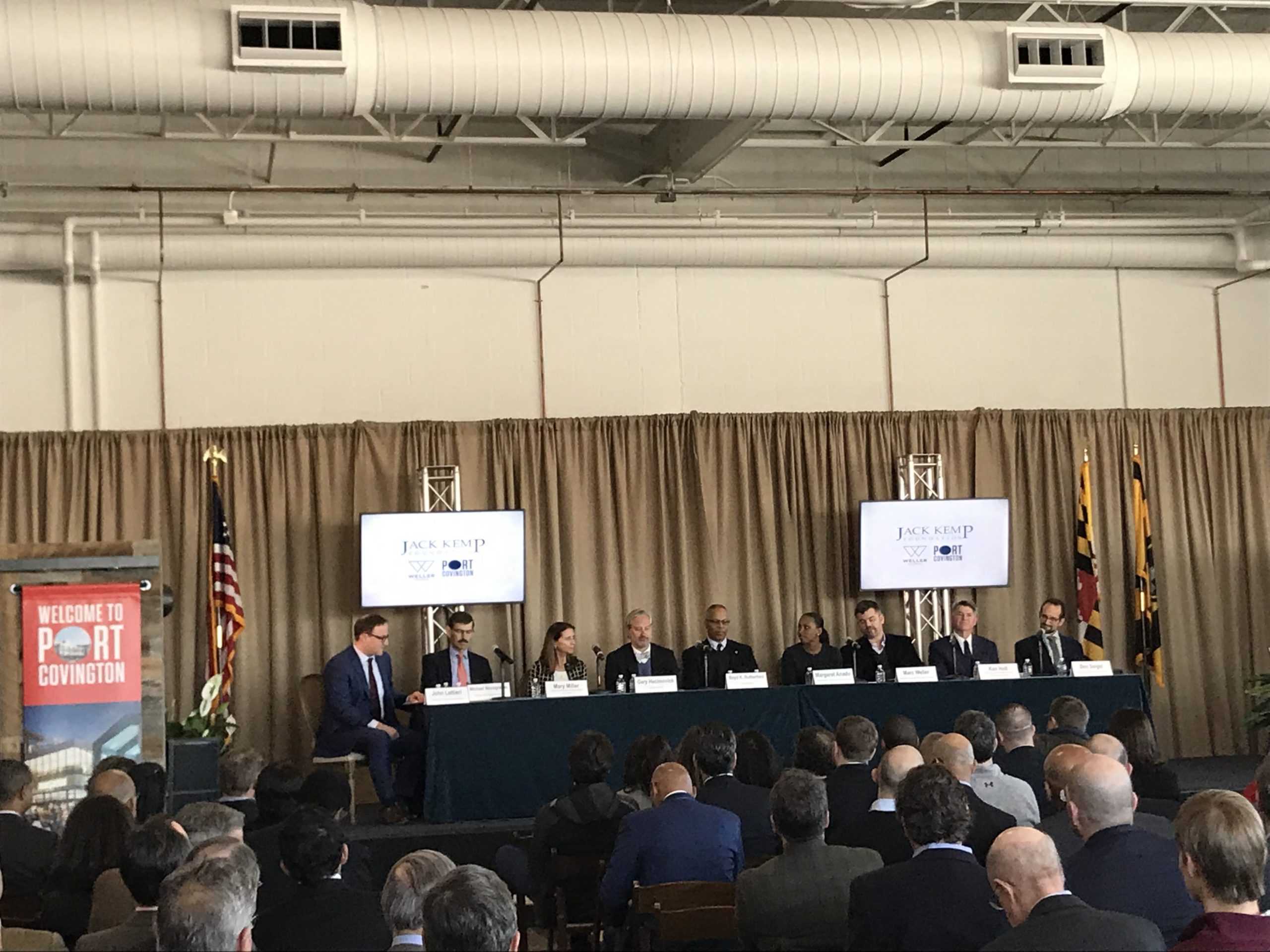Opportunity Zones have been generating lots of interest since initial rules were proposed in October.
“I’ve been practicing in this area for over 26 years and I’ve never seen the level of excitement about a domestic tax provision,” said Gary Hecimovich, a partner at Deloitte Tax.
They’re also making news locally. On Friday, the Yard 56 development across from Bayview Hospital in East Baltimore received an investment from Prudential Financial that will utilize the federal Opportunity Zones program. The amount of money involved in the deal was not disclosed, but it was the first such investment nationwide for Prudential Financial, according to the Baltimore Sun.
Yet the federal program is also still very new, and there are big questions, about how it all works, and whether it can deliver on the intent to transform neighborhoods that the law characterizes as “distressed.”
The Opportunity Zones initiative was created by the federal tax law that was passed in late 2017. The program provides tax incentives on capital gains for investors in Opportunity Funds that back development in struggling areas specifically designated as Opportunity Zones by governors across the country.
There’s room for state and local governments to have a role in how the program is implemented, according to leaders from across government, real estate and the private sector who gathered to discuss Opportunity Zones at the Kemp Forum on Opportunity Zones. Organized by the Jack Kemp Foundation, the Monday afternoon event drew about 200 people to City Garage in Port Covington, which is itself in an Opportunity Zone. Weller Development Company Founder Marc Weller, who is a leader on the project, sees the program as a potential way for the South Baltimore neighborhoods to benefit, as well.
At the city level, there are 42 Opportunity Zones. Within the Baltimore Development Corporation, Ben Seigel is leading an effort as Opportunity Zones Coordinator.
“In order for us to take full advantage, we’re coming at this from the approach that we cannot rely on private market and outside investment alone to make this happen,” Seigel said. That means there’s a role for the public sector, both in assessing the market and leveraging resources. It also means working to match investors with projects, and educating the community on what the program offers.
Organizing around the effort by local governments is leading to increased visibility for areas around the country that may have previously been overlooked by investors, said Margaret Anadu, Managing Director of the Goldman Sachs Urban Investment Group, which is an investor in the Port Covington project.
In Baltimore, the Opportunity Zones program also presents a mechanism that can direct a new influx of capital toward projects that have been prioritized by the community, said Mary J. Miller, former Under Secretary for Domestic Finance at the U.S. Department of the Treasury.
“We really have a chance here to put it together in a way that could be extremely purposeful if we are in fact matching the highest needs in the city with the best capital,” she said.
Along with real estate development projects, the Opportunity Zones are also seen as having the potential to help businesses. On the state level, where there are 149 Opportunity Zones in total, Maryland Gov. Larry Hogan recently announced a slate of proposals including additional state tax incentives for businesses that move into the Opportunity Zones, as well as workforce development funding. Following the bidding process for Amazon HQ2, providing the funds redirects a focus onto homegrown businesses, Lt. Gov. Boyd Rutherford, who is chairing a task force on Opportunity Zones in the state, said on Monday.
“We are going to focus a lot more on existing businesses…that can grow and expand and are in the Opportunity Zones and hire people,” said Rutherford.
Information about the real estate side of Opportunity Zones and matching funds available to businesses are both on view in a new web tool called the Maryland Opportunity Zone Information Exchange that was recently made available.
Alongside real estate opportunities, “we also felt that the State of Maryland needed to accentuate the startup companies that we have developed around a lot of our anchor institutions. In my way of thinking, small business is the lifeblood of this whole concept,” said Kenneth C. Holt, Maryland Secretary of Housing and Community Development. “It was very important for the State of Maryland to show that we are going to be investing in businesses and projects.”
Even as entities begin to make moves on real estate and there’s potential being recognized, further guidance is needed from federal regulators and the IRS to be able to ascertain if the funds can directly invest in businesses, said Michael Novogradac of Novogradac & Co.
If done as it appears to be intended, panelists said the program can provide incentives to both real estate and local businesses in a way that results in both new development and jobs.
“The perfect storm is to build real estate in a qualifying zone and get the benefit on the real estate side and on the tenant side, and that’s totally doable,” said Hecimovich.
While there’s urgency and a desire for clarity, panelists urged patience as new stakeholders get involved and learn, and the focus is kept on benefitting the community.
“The solutions to these challenges are no more simple than the issues that caused them,” Anadu said.
Join the conversation!
Find news, events, jobs and people who share your interests on Technical.ly's open community Slack

Baltimore daily roundup: Medtech made in Baltimore; Sen. Sanders visits Morgan State; Humane Ai review debate

Baltimore daily roundup: The city's new esports lab; a conference in Wilmington; GBC reports $4B of economic activity

Baltimore daily roundup: Find your next coworking space; sea turtle legislation; Dali raided and sued


